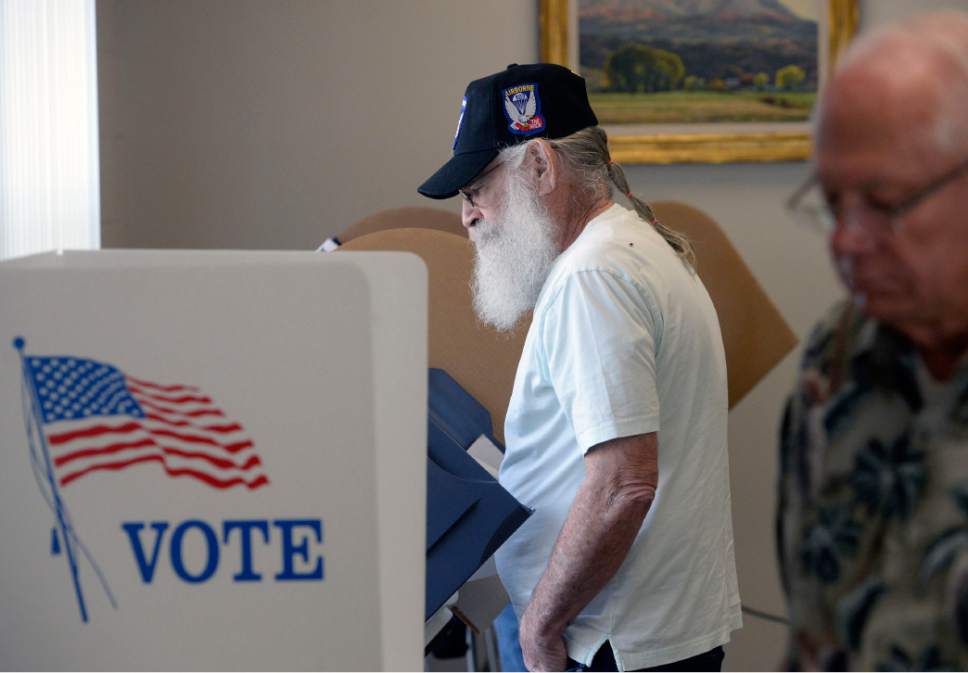This is an archived article that was published on sltrib.com in 2017, and information in the article may be outdated. It is provided only for personal research purposes and may not be reprinted.
It has been a purposeful last four years of getting more Utahns to vote. Mail-in voting was a rarity when Barack Obama and Mitt Romney were running for president, and there was no election-day registration even on a limited basis.
The 2012 election also preceded the Count My Vote movement to open up party primaries beyond the control of convention delegates. That movement resulted in the Senate Bill 54 compromise to allow candidates to petition for primary placement as an alternative.
And when Election Day 2016 came around, Utahns waited in longer lines than have been seen in any recent election.
So what did we get for all that effort? We moved from the 40th worst participation rate in 2012 all the way up to 39th last year.
What now? Do we need to start giving away prizes?
In fact, there is still work to be done to increase voter participation. Those long lines in Salt Lake County, for instance, were a result of too much early optimism about how many would vote by mail. The county cranked way down on the number of polling places. When mail-in ballots didn't roll in as fast as expected, it was already past the legal deadline to add more polling places. A change in the law hopefully will make it easier to add them.
The bad news is that legislators wouldn't pass a bill to continue with the election-day registration pilot program. The pilot was working, including its provisions in place to make sure only valid votes are counted. Instead of ending the experiment, we should expand it across the state. Let's face it. Voter apathy is a far greater concern than voter fraud, and election-day registration has not been shown to produce any fraud anyway.
The real challenge to get Utahns voting is having competitive races on Election Day. But how can you do that when the state is so dominated by one party?
There's really only one way to alter that dynamic in a way that is fair and equitable: independent redistricting. If we had an independent body handling redistricting of both congressional and legislative districts after the 2020 Census, we could see districts that truly show Utah's political diversity. If we continue to let state legislators handle it, we get their self-perpetuation.
A handful of states have wisely taken redistricting away from the people who gain the most from it by gaming the process. If we follow those states' example, we would still be a red state, and most districts likely would stay solidly Republican. But a larger number would be competitive in November, increasing the changes that our elected leaders would more accurately reflect the totality of Utah. That temptation could get people to turn out.



